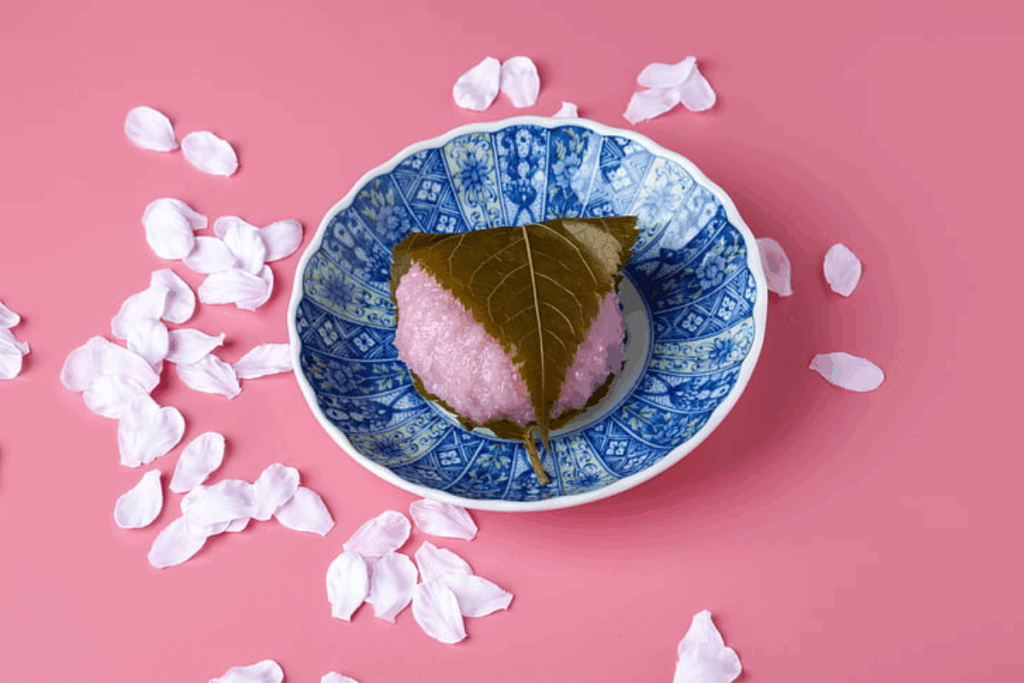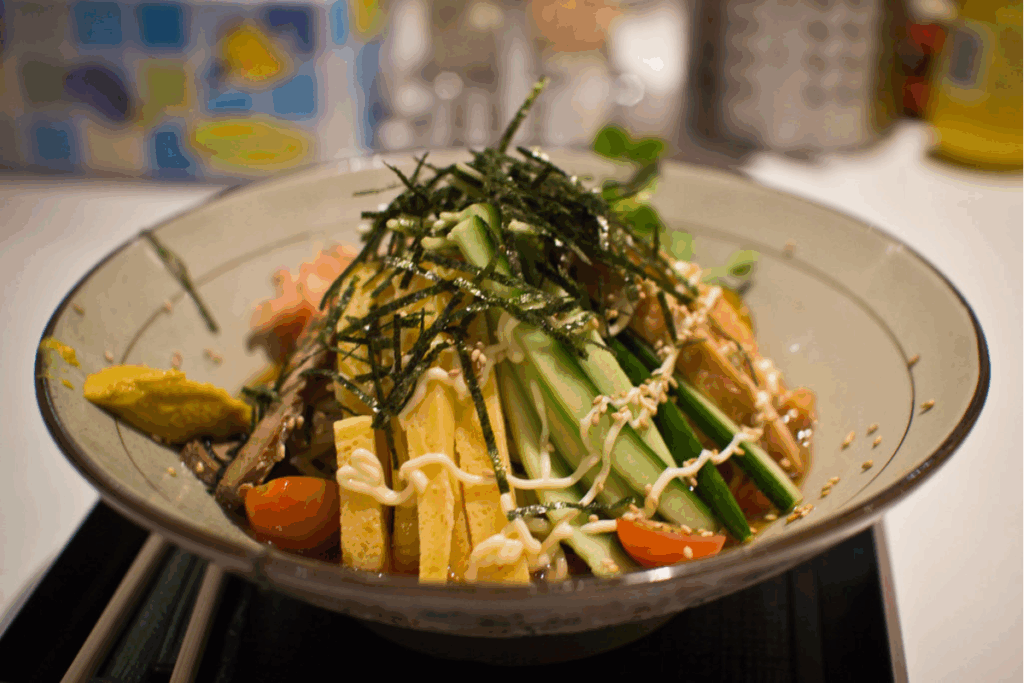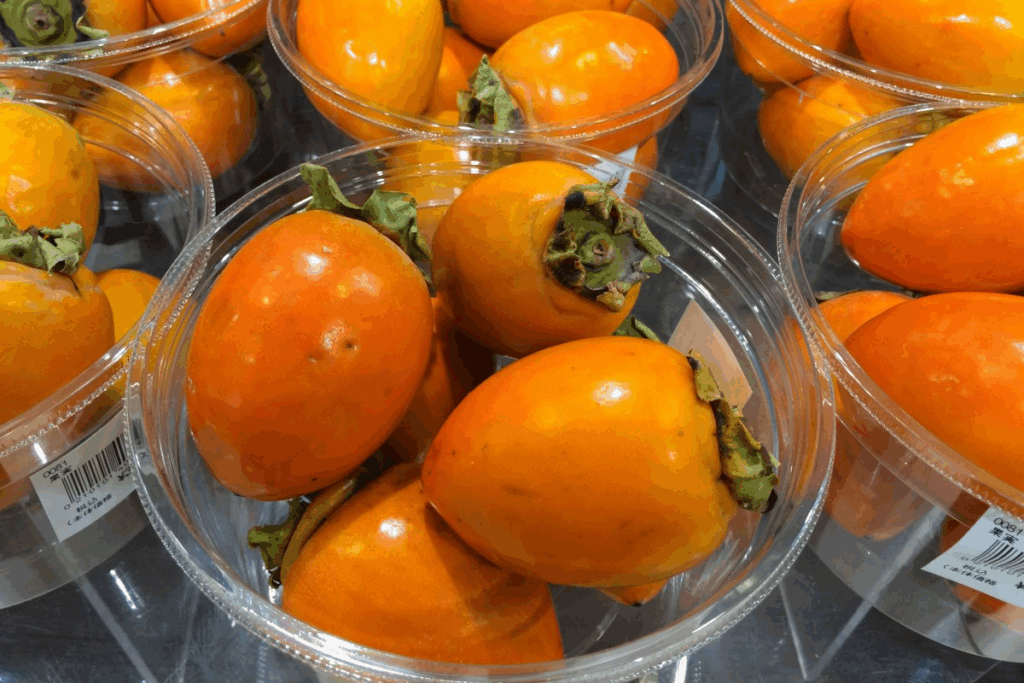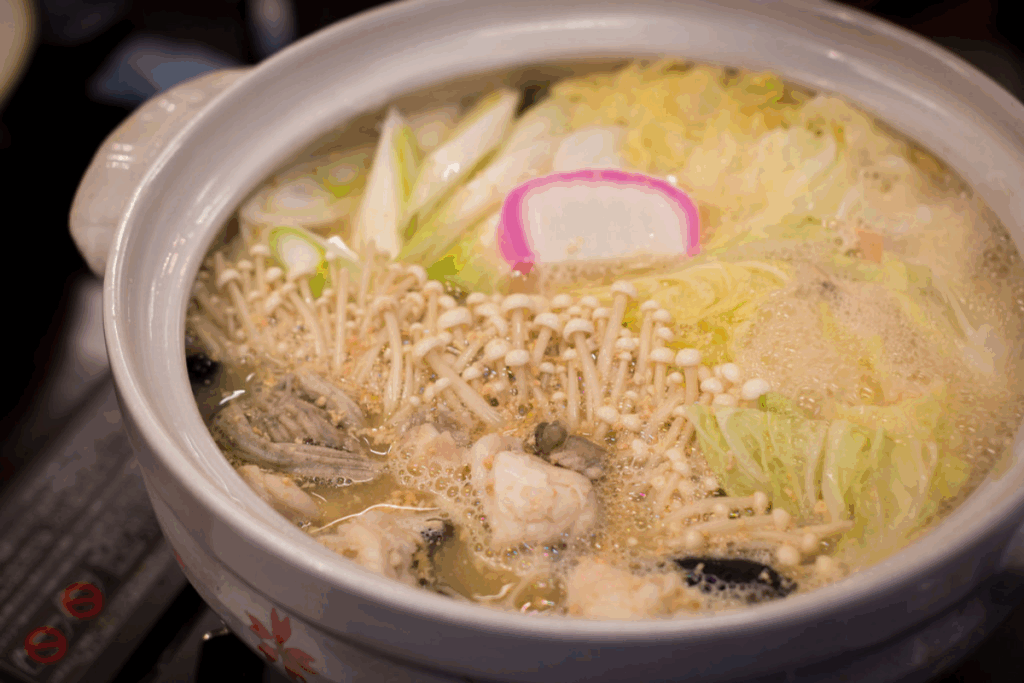Beginner’s Guide to Japanese Seasonal Foods
Travelers can try different types of Japanese sweet treats and delicacies throughout the year, but there are some seasonal foods that are a little more special.
Spring is known for its sakura-themed flavors mimicked after the beautiful cherry blossoms. Summer flavors are sweet and salty. Autumn prides itself on its chestnut, cinnamon and sweet potato. Mandarin oranges, chocolate and sweet red bean paste are popular during the winter.
Here is a guide on which seasonal foods people should try when visiting Japan.

Spring
Sakura Mochi This classic spring wagashi (sweet confectionary) is made from sweet rice or rice flour dyed pink to replicate the cherry blossoms. Inside, you’ll find anko (sweet red bean paste) filling which is wrapped in a pickled cherry leaf. Sakura mochi is very popular during Hinamatsuri (Girl’s Day) in March and is a famous symbol of the season.
Takenoko – Bamboo shoots are a delicacy in Japan. Their mild but crisp texture pairs well with takenoko gohan (rice cooked with bamboo shoots), miso soup or light dashi broth. Fresh bamboo shoots are a sign that spring has sprung in Japanese kitchens. If you visit the countryside regions, you’ll notice that many locals dig up the bamboo in the morning and turn it into a delicious treat by the afternoon.
Nanohana – Rapeseed Blossoms are known for having a slightly bitter and mustard-like taste. They’re usually prepared and dressed with karashi—a type of Japanese mustard—and then combined with soy sauce, creating the dish, nanohana no karashi-ae. The flavor balances bitter, heat and umami.
Strawberries (Amaou, Tochiotome) – Japan is renowned for its strawberries that are sweet and juicy. You can find local strawberries in department stores, often beautifully packaged and sometimes costing thousands of yen for one pack because of their popularity. In spring, they will appear in seasonal desserts such as shortcakes, parfaits and chocolate treats. There is also all-you-can-eat strawberry-picking farms spread across the country.

Summer
Hiyashi Chūka – Chilled Chinese-style noodles are a lunchtime favorite in Japan. It is served on a plate rather than in a bowl with broth while the cold ramen noodles are topped with colorful strips of egg crepe, cucumber, ham, tomato and sometimes imitation crab. It is paired with a soy-vinegar dressing and is a popular and refreshing meal during Japan’s hot, humid summer weather.
Unagi – Eel is typically grilled over charcoal and glazed with a sweet-savory tare sauce. It became a popular meal during Doyo no Ushi no Hi, a day in late July where people eat unagi to build their stamina against the summer heat. Unagi is served on rice in lacquered boxes or bowls, occasionally with a side that pairs well with the eel flavor.
Sōmen – Sōmen is white wheat noodles served cold with a soy dipping sauce called mentsuyu and topped with green onions, shiso or ginger. It is a simple yet satisfying meal that’s relatively fast and easy to make. You may have also seen videos of nagashi sōmen, where the noodles flow down a split bamboo flume in cold water while people catch them with chopsticks; a popular countryside resort twist on the dish.
Watermelon and Salt – A combination of sweet and salty. Watermelon with just a little bit of salt will help to replenish minerals throughout Japan’s hottest days. This snack is popular at summer festivals, beaches and picnics. It is both rejuvenating and hydrating.

Autumn
Kuri Gohan (Chestnut Rice) – This dish combines peeled chestnuts that are steamed together with rice that is flavored with sake, salt and dashi broth. The chestnuts show up as a simplistic yet sweet and buttery texture. Kuri gohan is often served at home but can also be found in seasonal kaiseki (set menus) and bento boxes, symbolizing harvest season.
Sanma (Pacific Saury) – This silver fish is grilled over charcoal and sprinkled with a bit of salt and is typically served with grated daikon and a dash of sudachi citrus. Ranging from September to October, Sanma season is short, making it much more popular in fish markets and on izakaya menus.
Kabocha – Pumpkin is a worldwide autumn staple, but especially in Japan. You will find it in home-cooked nimono, which is vegetables simmered in soy and dashi, soups, crispy tempura and croquettes. Unlike other types of pumpkins, kabocha’s skin is tender and edible when it is cooked, adding flavor and a pop of color to each dish.
Persimmons (Kaki) – A widely known symbol of autumn in Japan. They are typically eaten fresh (fuyū varieties). Another seasonal favorite is hoshigaki, peeled persimmons strung up and air-dried until they develop a sweet and chewy texture. Pairing persimmons with a cup of green tea adds a very nostalgic touch, especially for a lot of Japanese locals. Persimmons are common in desserts and salads and can be paired with cheese or cured meats.
Here is a list of a few other popular autumn dishes.

Nabe – During the cold months, a steaming pot of nabe will warm diners in a matter of minutes. With ingredients such as tofu, shiitake mushrooms, napa cabbage and sliced meat, a flavorful broth will simmer in the hot pot. Popular variations of nabe are yosenabe (mixed ingredients), shabu-shabu (light, swish-cooked meat) and chanko nabe (protein-packed hot pot favored by sumo wrestlers).
Oden – Oden is both a street food and a convenience store top purchase during the winter. It features tender daikon radishes, fish cakes, egg and chewy konnyaku simmered in a soy-dashi broth. Oden can be found slowly cooked in big metal trays at convenience stores such as 7-Eleven from late autumn through winter, as well as in neighborhood oden bars.
Mikan (Mandarin Oranges) – These petite oranges are sweet and easy to peel for a convenient snack, and their simple sweetness makes them a delicious treat during cold months while cozied up at home. Many people eat them while sitting under a kotatsu or a heated table with a blanket. Mikan are also made into winter cakes, jams and hot drinks.Strawberry Shortcake – Christmas cakes in Japan involve fluffy sponge cake that is layered with cream and strawberries. It has been a symbol of a joyful and romantic holiday season for generations. Many bakeries throughout the Christmas season will sell these delicious cakes and decorate them with festive chocolate plaques or Santa figurines.

